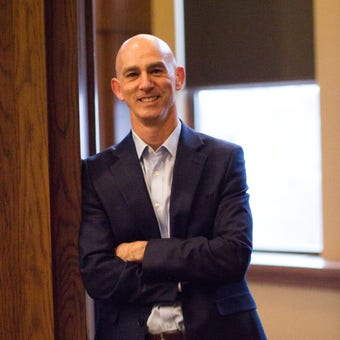House Republicans demand school districts reopen after COVID relief bill passed
Rep. Ashley Hinson, R-Iowa, discusses sponsoring the ‘Reopen Schools Act’ and how it would benefit American children.
Schools across the country are about to get a massive infusion of funds. The American Rescue Plan provides nearly $123 billion for K-12 schools, more federal emergency aid for education than ever before.
This money is urgently needed. The superintendents and state education commissioners who are a part of the network I lead, Chiefs for Change, are grateful to President Biden and Congress for approving resources that are commensurate with the tremendous challenges schools face during COVID-19. We have all seen the toll that the pandemic is taking on children, especially those who were already vulnerable.
After two school years of disrupted learning, many kids have fallen behind academically, and others are struggling with isolation, unsafe homes, hunger and more. Schools have been waiting for months for additional federal assistance. Now that it’s here, leaders must use the money strategically – so that it not only helps students recover from the current crisis, but helps to build a better and more equitable education system for future generations.
TUCKER CARLSON: HOW THE PANDEMIC HAS MADE FOOLS OF THE SO-CALLED 'EXPERTS'
So, how to do that?
We worked with our chiefs and research and policy experts on recommendations for how education leaders across the country should use their federal relief aid. Here are five key areas:
More from Opinion
- Liz Peek: Biden out of touch – this is what he doesn't get about Americans on COVID lockdown anniversary
- Janice Dean: Remembering COVID victims – We care and we will honor them. Here's how you can join us
- Rep. Debbie Lesko: As an abuse survivor, here's why I worry about Dems' changes to Violence Against Women Act
Reopening schools and keeping them open
There is no substitute for face-to-face teaching and learning, and children benefit in countless ways when they spend time with their teachers and peers.
Systems should use federal aid to implement measures that protect health and ensure schools can safely reopen as soon as possible – and can remain open – for critical in-person instruction. These measures include personal protective equipment, routine COVID testing for students and staff, vaccinations for employees and ventilation upgrades.
Accelerating student learning
Students have experienced significant learning loss during the pandemic, and this could have serious long-term consequences for their individual futures and the health of our nation overall. Systems should invest in strategies to catch students up and accelerate their progress, including transitioning to a longer and more flexible academic year and adopting high-quality curricula.
Leaders should also modify staffing models so students are guided by teams of adults, including teachers with deep subject-matter and instructional expertise, educators who can offer one-on-one assistance, and others who can provide mentorship and mental health support to students who need it, all within a coherent framework for social and emotional learning.
Systems should use federal funds to ensure kids have the devices and internet they need to learn.
Creating strong postsecondary pathways
The percentage of students enrolling in their first year of college dropped 13% last fall. As high school graduates step into an uncertain future dominated by the widespread economic fallout of COVID-19, it is more important than ever for schools to ensure kids have affordable pathways to college and good jobs in high-growth, high-demand fields.
Systems should double down on their efforts to help all students apply for college financial aid. They should invest in postsecondary data systems to track where their students go after high school – whether that be college, the military or the workforce – and how they do once they get there.
This information can provide important insights into how well systems are preparing kids to succeed in life and can be used to improve schools and programs – including newly designed career and technical education opportunities aligned to regional workforce needs.
They should also offer more ways for students to earn college credit while still in high school.
Closing the digital divide
Nearly 17 million students in America don’t have high-speed internet at home. Systems should use federal funds to ensure kids have the devices and internet they need to learn.
Examples of creative approaches include leveraging "dark fiber" to connect students’ homes to schools’ Wi-Fi networks in the San Antonio Independent School District; installing transmitter/receivers on school rooftops so people nearby can get an over-the-air internet signal in the Boulder Valley School District; and blanketing neighborhoods with free Wi-Fi in the Phoenix Union High School District.
Redesigning assessments and accountability systems
We need to understand where students are in their learning, especially in the wake of COVID-19. While current tests provide a snapshot of what students know in reading and math, they do not give a full picture of whether kids are on track to thrive as adults.
Systems should invest in new and better tests that measure a broader set of skills and more clearly signal college and career readiness. Using federal relief aid, states should pilot novel assessment and accountability models that can provide insights for understanding – and improving – student learning now and in the years to come.
CLICK HERE TO GET THE OPINION NEWSLETTER
No matter what, systems must make the most of this critical moment. They should develop comprehensive, long-range plans to support their students, adopt evidence-based practices and partner with credible providers that have direct expertise.
With an unprecedented amount of emergency federal aid, K-12 leaders have a historic opportunity to help our nation come back from the worst crisis in living memory and to create the education system we all want for America’s children.



